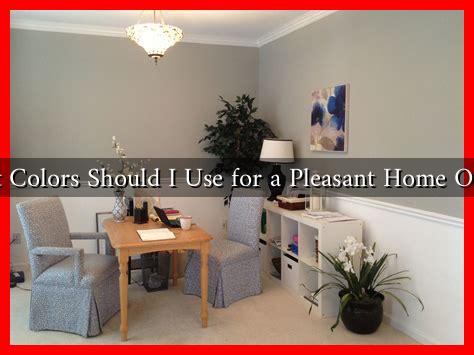-
Table of Contents
What Colors Should I Use for a Pleasant Home Office?
Creating a pleasant home office environment is essential for productivity and well-being. One of the most impactful elements in designing your workspace is color. The colors you choose can influence your mood, focus, and overall work performance. In this article, we will explore the psychology of color, suggest specific colors for your home office, and provide tips on how to effectively incorporate them into your space.
The Psychology of Color
Color psychology is the study of how colors affect human behavior and emotions. Different colors can evoke various feelings and responses, making them powerful tools in interior design. According to a study by the Institute for Color Research, people make a subconscious judgment about a person, environment, or product within 90 seconds of initial viewing, and between 62% and 90% of that assessment is based on color alone.
Choosing the Right Colors for Your Home Office
When selecting colors for your home office, consider the type of work you do and the atmosphere you want to create. Here are some colors that are commonly recommended for home offices, along with their psychological effects:
- Blue: Known for its calming effects, blue can help reduce stress and increase focus. It is an excellent choice for tasks that require concentration and creativity.
- Green: Symbolizing nature, green promotes balance and tranquility. It is easy on the eyes and can help reduce fatigue, making it ideal for long working hours.
- Yellow: A bright and cheerful color, yellow can stimulate creativity and energy. However, it should be used sparingly, as too much yellow can lead to feelings of frustration.
- Gray: A neutral color that conveys professionalism and sophistication. Gray can serve as a great backdrop for more vibrant accent colors.
- White: Symbolizing cleanliness and simplicity, white can make a space feel larger and more open. It is best used in combination with other colors to avoid a sterile atmosphere.
Case Studies and Examples
Many successful companies have recognized the importance of color in their office designs. For instance, Google’s offices often feature bright colors like green and yellow to foster creativity and collaboration among employees. Similarly, the tech giant Apple uses a minimalist approach with white and gray tones to create a clean and focused environment.
In a study conducted by the University of Texas, researchers found that employees in blue offices were 20% more productive than those in red offices. This highlights the significant impact that color can have on work performance.
Incorporating Color into Your Home Office
Once you’ve chosen your color palette, it’s time to incorporate it into your home office. Here are some tips to effectively use color in your workspace:
- Accent Walls: Consider painting one wall in a bold color to create a focal point without overwhelming the space.
- Furniture and Accessories: Use colorful furniture or accessories like chairs, rugs, or artwork to add personality to your office.
- Natural Light: Take advantage of natural light to enhance the colors in your office. Light can change how colors appear, so observe how they look at different times of the day.
- Color Combinations: Pair complementary colors to create a harmonious look. For example, blue and orange or green and yellow can work well together.
Conclusion
Choosing the right colors for your home office can significantly impact your productivity, mood, and overall work experience. By understanding the psychology of color and selecting hues that align with your work style and preferences, you can create a pleasant and inspiring workspace. Remember to consider how different colors interact with each other and the natural light in your office. With thoughtful planning and design, your home office can become a sanctuary for creativity and productivity.
For more insights on color psychology and design, you can visit Color Psychology.



